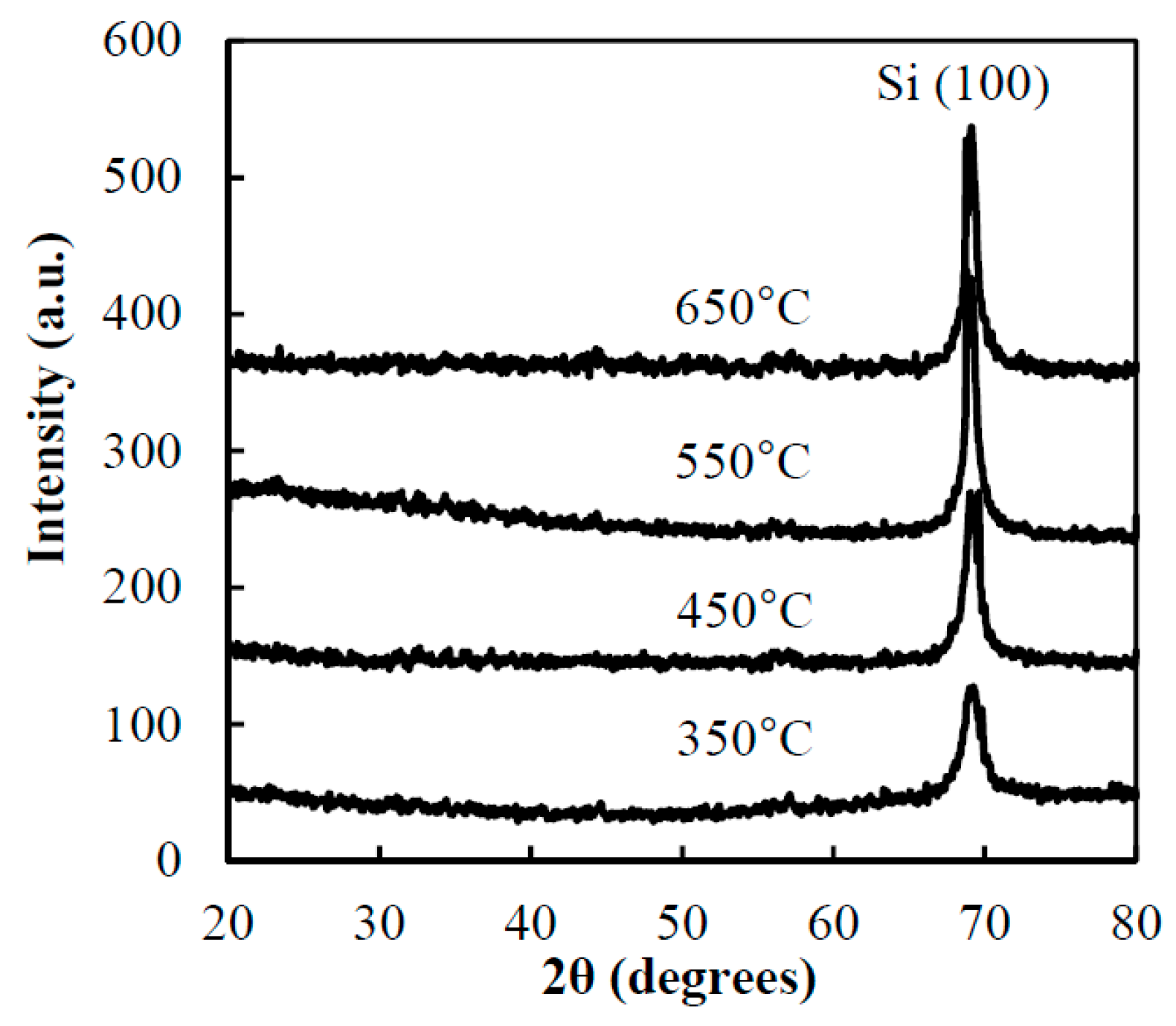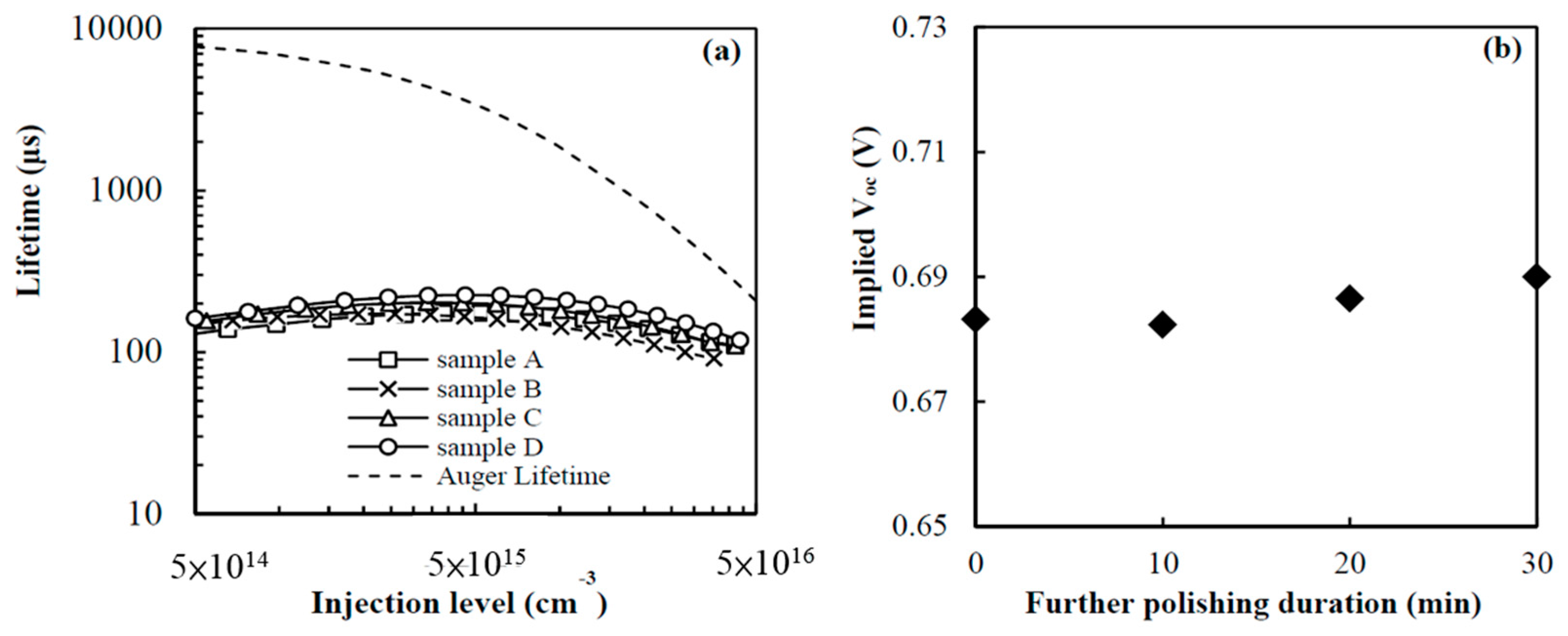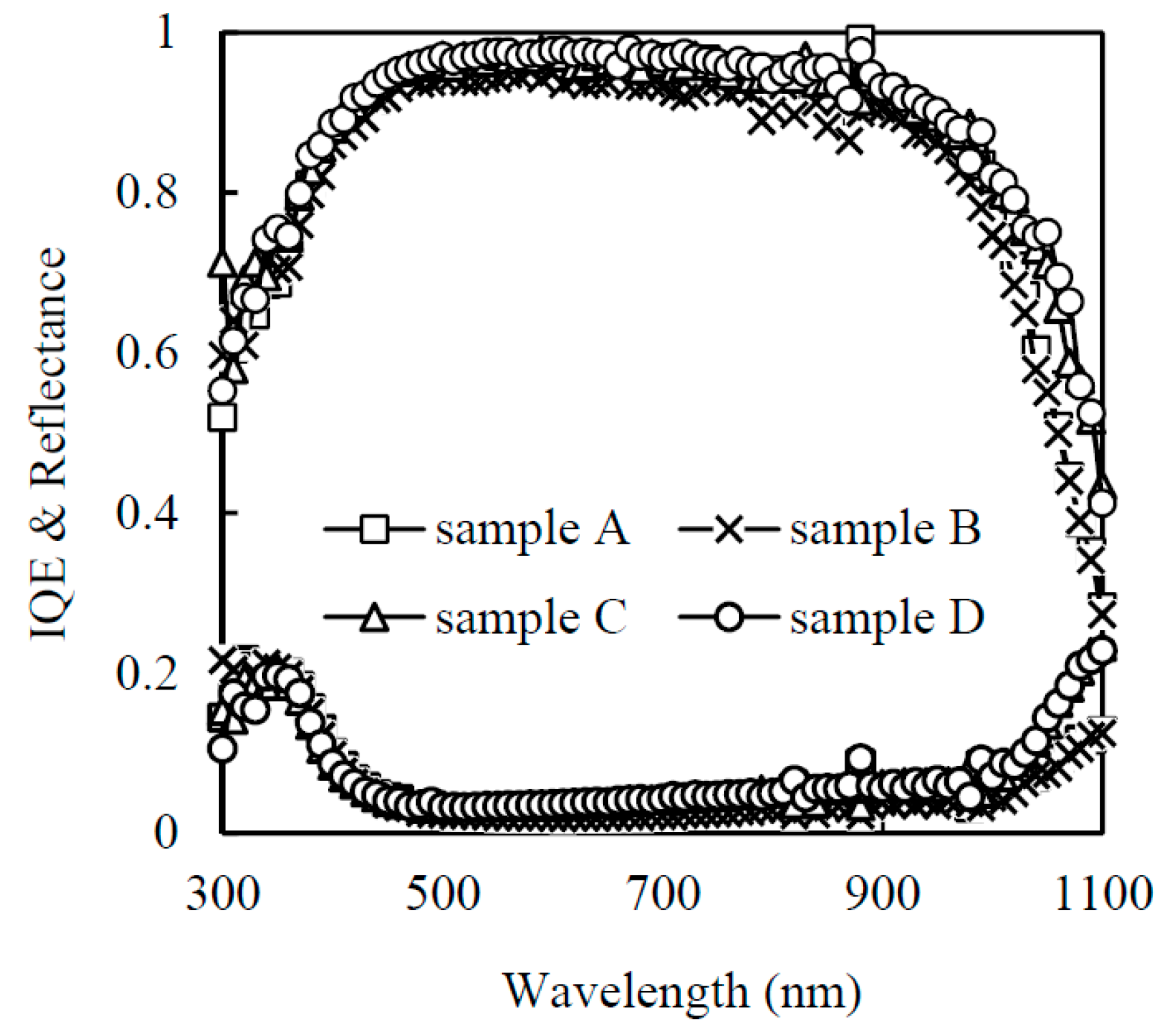Performance Improvement of High Efficiency Mono-Crystalline Silicon Solar Cells by Modifying Rear-Side Morphology
Abstract
:1. Introduction
2. Materials and Methods
3. Results and Discussion
4. Conclusions
Acknowledgments
Author Contributions
Conflicts of Interest
References
- Tanaka, M.; Taguchi, M.; Matsuyama, T.; Sawada, T.; Tsuda, S.; Nakano, S.; Hanafusa, H.; Kuwano, S. Development of new s-Si/c-Si heterojunction solar cells: ACJ-HIT (artificially constructed junction-heterojunction with intrinsic thin-layer). Jpn. J. Appl. Phys. 1992, 31, 3518. [Google Scholar] [CrossRef]
- Swanson, R.M.; Beckwith, S.K.; Crane, R.A.; Eades, W.D.; Kwark, Y.H.; Sinton, R.A.; Swirhun, S.E. Point-Contact Silicon Solar Cells. IEEE Trans. Electron Devices 1984, 31, 661–664. [Google Scholar] [CrossRef]
- Blakers, A.W.; Wang, A.; Milne, A.M.; Zhao, J.; Green, M.A. 22.8% efficient silicon solar cell. Appl. Phys. Lett. 1989, 55, 1363–1365. [Google Scholar] [CrossRef]
- Agostinelli, G.; Choulat, P.; Ma, Y.; Beaucarne, G. Thin Solar Cells: Issues and Processing for High Efficiency. In Proceedings of the 17th Workshop on Crystalline Silicon Solar Cells & Modules: Materials and Processes, Vail, CO, USA, 5–8 August 2007. [Google Scholar]
- Saint-Cast, P.; Kania, D.; Hofmann, M.; Benick, J.; Rentsch, J.; Preu, R. Very low surface recombination velocity on p-type c-Si by high-rate plasma-deposited aluminum oxide. Appl. Phys. Lett. 2009, 95, 151502. [Google Scholar] [CrossRef]
- Hoex, B.; Schmidt, J.; Bock, R.; Altermatt, P.P.; van de Sanden, M.C.M.; Kessels, W.M.M. Excellent passivation of highly doped p-type Si surfaces by the negative-charge-dielectric Al2O3. Appl. Phys. Lett. 2007, 91, 112107. [Google Scholar] [CrossRef]
- Kim, J.; Kim, J.; Lim, J.Y.; Hwang, Y.; Cho, J.; Choi, H.; Lee, E. Laser ablation of aluminum oxide and silicon nitride rear-side passivation for i-PERC cell. Renew. Energy 2015, 79, 135–139. [Google Scholar] [CrossRef]
- Hwang, Y.; Park, C.S.; Kim, J.; Kim, J.; Lim, J.Y.; Choi, H.; Jo, J.; Lee, E. Effect of laser damage etching on i-PERC solar cells. Renew. Energy 2015, 79, 131–134. [Google Scholar] [CrossRef]
- Kersten, F.; Schmid, A.; Bordihn, S.; Müller, J.W.; Heitmann, J. Role of Annealing Conditions on Surface Passivation Properties of ALD Al2O3 Films. Energy Procedia 2013, 38, 843–848. [Google Scholar] [CrossRef]
- Suh, D.; Liang, W.S. Electrical properties of atomic layer deposited Al2O3 with anneal temperature for surface passivation. Thin Solid Films 2013, 539, 309–316. [Google Scholar] [CrossRef]
- Richter, A.; Glunz, S.W. Improved quantitative description of Auger recombination in crystalline silicon. Phys. Rev. B 2012, 86, 165202. [Google Scholar] [CrossRef]
- Lu, P.H.; Wang, K.; Lu, Z.; Lennon, A.J.; Wenham, S.R. Anodic Aluminum Oxide Passivation For Silicon Solar Cells. IEEE J. Photovolt. 2013, 3, 143–151. [Google Scholar] [CrossRef]
- Wang, H.P.; Li, A.C.; Lin, T.Y.; He, J.H. Concurrent improvement in optical and electrical characteristics by using inverted pyramidal array structures toward efficient Si heterojunction solar cells. Nano Energy 2016, 23, 1–6. [Google Scholar] [CrossRef]
- Basore, P.A. Extended spectral analysis of internal quantum efficiency. In Proceedings of the Conference Record of the Twenty Third IEEE Photovoltaic Specialists Conference, Louisville, KY, USA, 10–14 May 1993; pp. 147–152. [Google Scholar]





| Sample | Voc (V) | Jsc (mA/cm2) | FF | Efficiency (%) |
|---|---|---|---|---|
| A | 0.655 | 36.47 | 0.779 | 18.62 |
| B | 0.648 | 36.43 | 0.789 | 18.64 |
| C | 0.660 | 36.64 | 0.777 | 18.80 |
| D | 0.662 | 36.69 | 0.793 | 19.27 |
© 2017 by the authors. Licensee MDPI, Basel, Switzerland. This article is an open access article distributed under the terms and conditions of the Creative Commons Attribution (CC BY) license (http://creativecommons.org/licenses/by/4.0/).
Share and Cite
Kung, C.-Y.; Yang, C.-H.; Huang, C.-W.; Lien, S.-Y.; Zhu, W.-Z.; Lin, H.-J.; Zhang, X.-Y. Performance Improvement of High Efficiency Mono-Crystalline Silicon Solar Cells by Modifying Rear-Side Morphology. Appl. Sci. 2017, 7, 410. https://doi.org/10.3390/app7040410
Kung C-Y, Yang C-H, Huang C-W, Lien S-Y, Zhu W-Z, Lin H-J, Zhang X-Y. Performance Improvement of High Efficiency Mono-Crystalline Silicon Solar Cells by Modifying Rear-Side Morphology. Applied Sciences. 2017; 7(4):410. https://doi.org/10.3390/app7040410
Chicago/Turabian StyleKung, Chung-Yuan, Chih-Hsiang Yang, Chun-Wei Huang, Shui-Yang Lien, Wen-Zhang Zhu, Hai-Jun Lin, and Xiao-Ying Zhang. 2017. "Performance Improvement of High Efficiency Mono-Crystalline Silicon Solar Cells by Modifying Rear-Side Morphology" Applied Sciences 7, no. 4: 410. https://doi.org/10.3390/app7040410






